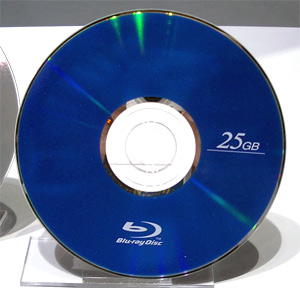 Blu-ray, also known as Blu-ray Disc (BD), is the next-generation optical disc format designed to enable recording, rewriting and playback of high-definition video (HD). High-definition video is the technology which brings much better picture resolution and clarity.The Blu-ray Disc specification was officially announced in February 2002.
Blu-ray, also known as Blu-ray Disc (BD), is the next-generation optical disc format designed to enable recording, rewriting and playback of high-definition video (HD). High-definition video is the technology which brings much better picture resolution and clarity.The Blu-ray Disc specification was officially announced in February 2002.
It was formulated by a consortium of nine manufacturers called the “Blu-Ray Disc Founders”.
These companies include Hitachi, LG Electronics, Matsushita Electric Industrial, Pioneer, Royal Philips Electronics, Samsung Electronics, Sharp, Sony and Thomson.
The name Blu-ray is derived from the underlying technology, which utilizes a blue laser to read and write data. The name is a combination of “Blue” (blue-violet laser) and “Ray” (optical ray). According to the Blu-ray Disc Association the spelling of “Blu-ray” is not incomplete since the character “e” was intentionally left out so the term could be registered as a trademark.
Blu-ray Disc recorders were first launched in Japan in year 2003.
The need to come up with a technology like Blu Ray was driven by the advent HD video which needed bigger and better optical storage solutions. The DVD doesn’t have enough space for HD video. The amount of data that DVD can hold is approximately 4.8GB whereas an hour’s content in High Definition Video is close to 12GB. The Blu-ray disc comes in two types, single layer disc and dual layer disc. Each layer is capable of holding up to 27GB on a single-layer disc which means it can hold 2 hours of HD content and the dual layer can hold 4 hours of content.
Blue-ray also has many other advantages over the traditional DVD like the ability to instantly skip to any spot on the disc, record one program while watching another on the disc, edit or
reorder programs recorded on the disc, and even access the internet to download extra features.
The laser used in Blu-ray is a blue laser that has much shorter wavelength (405nm) than a red laser (650nm) which is used to read CDs and DVDs. Since the laser is smaller and more precise it can read much smaller pits than the DVD laser. The smaller the pits, the more that can fit onto a disc, the more data the disc can hold. Below are three images of pits, one on a CD, one on a DVD, and one on a Blu-ray disc.
This shorter wavelength allows the blue laser to be focused with greater precision than a red
laser, making it possible to store more information on a disc the same size as a standard CD/DVD, or to allow increasingly useful amounts of data to be stored on even smaller media.
Advantages of BluRay
1. It can record high-definition television (HDTV) without any quality loss.
2. It can edit programs recorded on the disc. It automatically searches for an empty space on the disc to avoid recording over pre-recorded data.
Blu-ray Disc Format
Blu-ray Disc is in pre-recorded, recordable and rewritable variants. The pre-recorded disc is called BD ROM, and usually contains pre-recorded content in High Definition format. The
recordable disc is called BD R, and can be used for recording huge amounts of data or video. The rewritable disc is called BD RE, and offers the same large capacity in a disc format that allows for repetitive usage.
All three Blu-ray Disc types are in two versions single layer and double layer. A double layer
disc may hold up to twice the amount of data or video compared to a single layer disc, and uses two independent layers placed on one side of the disc to store its information.A single-layer disc holds up to 25 gigabytes, while a double-layer disc holds up to 50 gigabytes of data, without the need to flip the disc.
Blu-ray disc does not play on current CD and DVD players, because they lack the bluelaser required to read them. If the appropriate lasers are included, Blu-ray players will be able to play the other two formats.
Video will be stored using MPEG-2 technology, just like in DVD-Video discs, but in much higher bit rate. Currently DVD-Video discs can have a bitrate upto approximately 9.8Mbps, but Blu-Ray discs support bitrates as high approximately as 36MBps.The Blu-Ray Disc uses a cartridge to protect the optical disc’s surface from dust, scratches etc.

